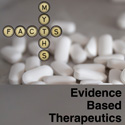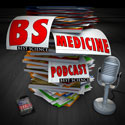Episode 118: The mind boggles and the heart goes all a flutter – Part 2
In episode 118, James and Mike continue their discussion of atrial fibrillation by going into details about the evidence for treating patients with atrial fibrillation and how to make decisions between ASA/warfarin/dabigatran and also what it means to be in or out of the INR therapeutic range. At the end James gives Mike a well deserved, but late, Christmas present, and both their hearts skip a beat – but not enough to require anticoagulation.
Show notes
1) Canadian Cardiovascular Society 2010 Atrial Fibrillation Guidelines
2) Warfarin vs ASA in afib
Ann Intern Med 2007;146:857-67
Heart 2008;94:1607-1613
2) Time in therapeutic range
Can Fam Phys 2005; 51:384-5
Can Fam Phys 2003; 49:181-4
Family Practice 2004; 21:612–6
J Manag Care Pharm 2009:15:244-52
3) Event rates by INR range
![]() CMAJ 2008;179(3):235-44
CMAJ 2008;179(3):235-44
4) Clopidogrel and ASA in atrial fibrillation
Lancet 2006;367:1903-12
NEJM 2009;360:2066-78
NEJM 2009;360:2127-9


